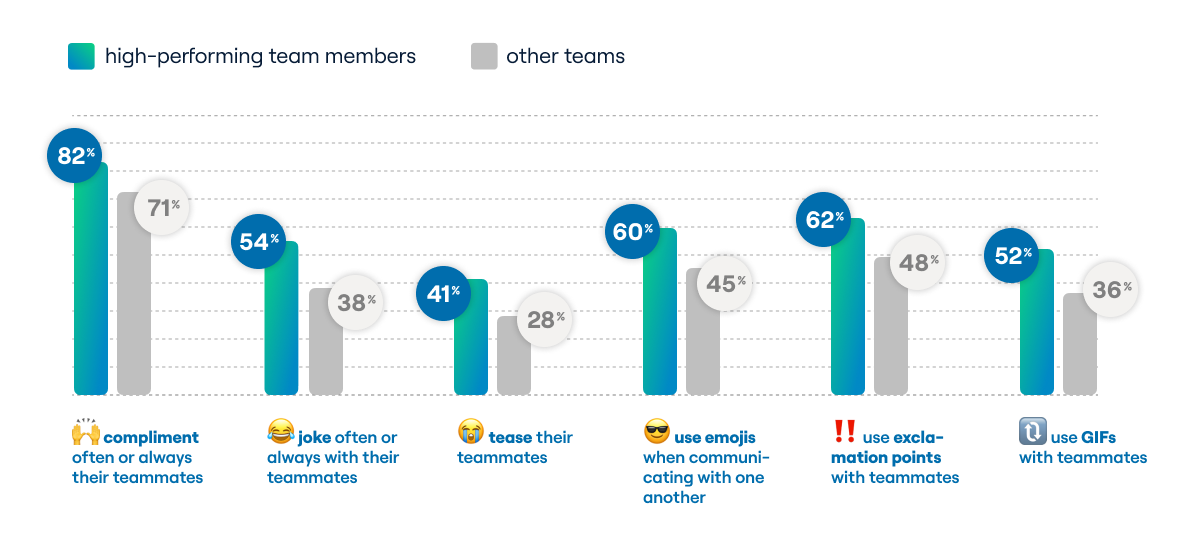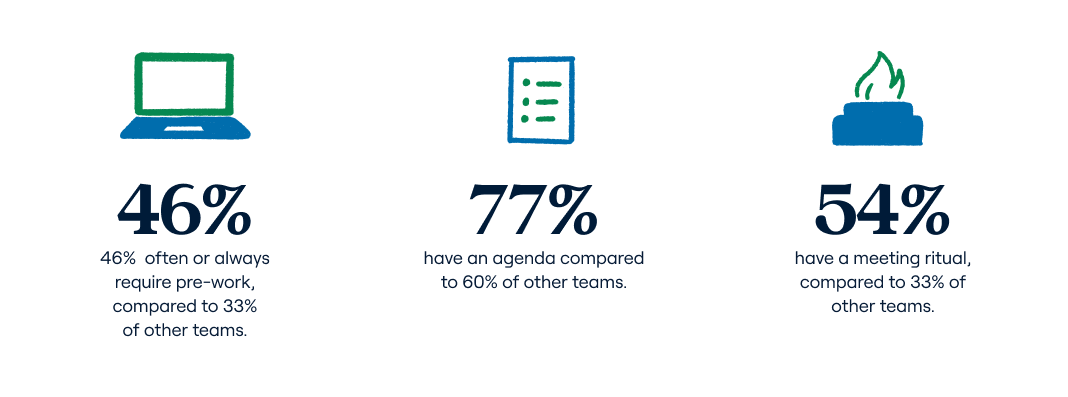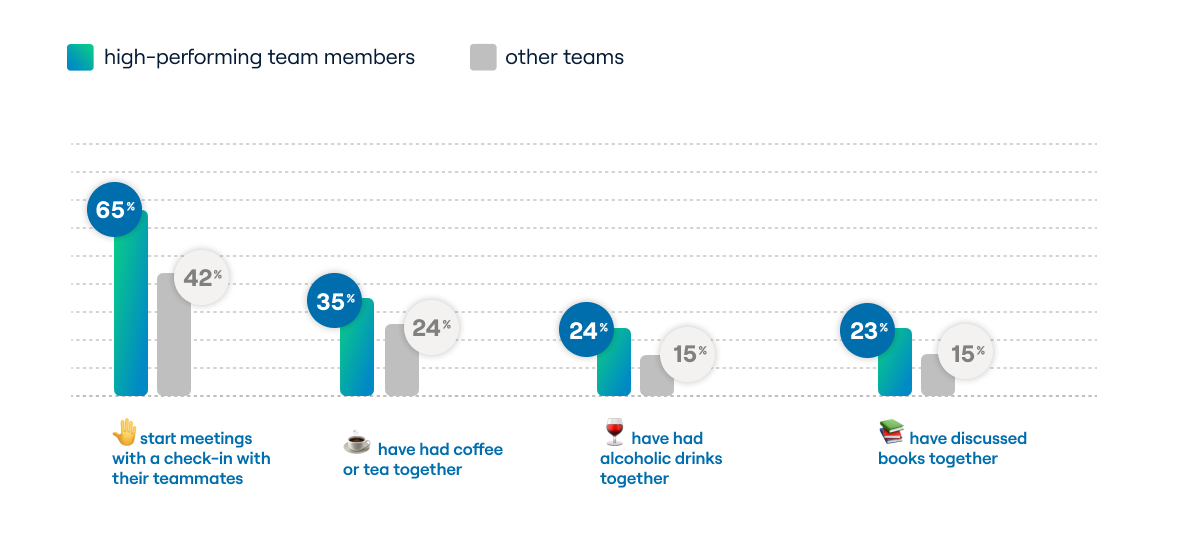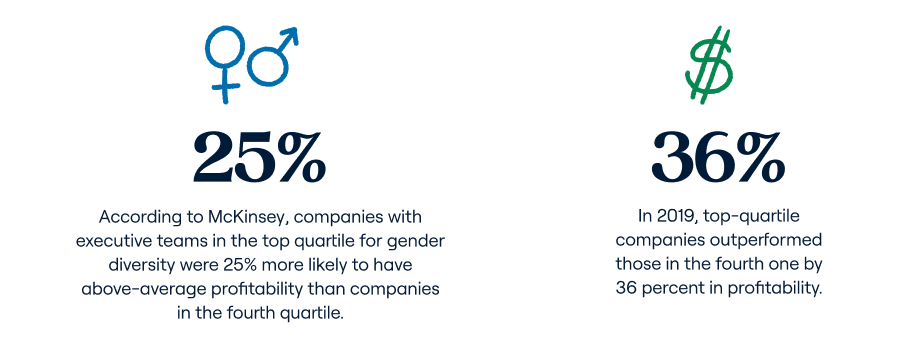A survey by Front, 2021
Behind every successful business is a team that cares.
There’s nothing more inspiring than seeing a hard-working team accomplish something great.
Think about those “rocket ships”—those household name brands with teams that feel unstoppable. What are these high-performing teams doing differently from their competition? How are communication patterns, meeting habits, and interpersonal relationships fueling heightened levels of creativity, productivity, and ultimately, business success?
This report unpacks the habits of high-performing teams to understand what sets them apart from the rest. Results showed common threads in communication, meeting culture, and teammate relationships help power high-performing teams to new heights.
To collect these findings, Front partnered with Dr. Ron Friedman, a social psychologist specializing in human motivation, and author of The Best Place to Work and Decoding Greatness. Dr. Friedman is the founder of ignite80, a learning and development company that translates research in neuroscience, human physiology, and behavioral economics into practical strategies that help working professionals become healthier, happier and more productive. Ron said:
“We’ve long known that workplace friendships yield more productive employees, and not just because friends are easier to work with. It’s because there’s more on the line. When colleagues are close, a poor effort means more than a dissatisfied customer or an unhappy manager. It means letting down your friends.
What this new research suggests is that high-performing teams don’t just have close friendships—they have authentic relationships. They share positive and negative emotions; they’re collaborative but also competitive; they work hard yet they make time to gossip, bond over non-work matters, and even discuss books.
Creating a high-performing workplace therefore takes more than simply hiring the right people or building a strong workplace culture. It requires creating opportunities for genuine, authentic relationships to develop.”
Methodology
This quantitative research study was conducted by ignite80 on behalf of Front to explore the behaviors and attitudes of office workers who are members of high-performing teams.
A total of 1,106 U.S office workers who operate in teams of three or more were interviewed between June 23 and July 7, 2021. The sample spanned an age range of 18 to 55+, over 15 industries, all company sizes, and all levels of seniority. Respondents completed 48 multiple choice questions on a variety of workplace topics.
To identify members of high-performing teams, we had respondents (1) rate their team’s effectiveness and (2) compare their team’s performance to other teams in their industry. Workers who scored their team a 10 out of 10 on both items were designated members of high-performing teams (n = 223).
Communication patterns
Communicate frequently and openly.
Strong communication skills are important for high-performing teams. It is no surprise that these teams communicate amongst each other more frequently. High-performing teams reported exchanging:

10 phone calls per day on average, while other teams reported 6.
19 emails per day, while other teams reported 11.
Three messages per day on task management software, while other teams reported one.
How often your team communicates and over what channels aren’t the only factors to consider. Members of high-performing teams don’t shy away from honest dialogue, sharing both positive emotions, like wins and jokes, and negative comments, like critiques and complaints.
The best teams share positive emotions…

82% of high-performing team members often or always compliment their teammates, compared to 71% of members of other teams.
54% of high-performing team members often or always joke with their teammates, compared to 38% of members of other teams.
41% of high-performing team members tease their teammates, compared to 28% of members of other teams.
60% of high-performing team members use emojis when communicating with one another, compared to 45% of members of other teams.
62% of high-performing team members use exclamation points with teammates, compared to 48% of members of other teams.
52% of high-performing team members use GIFs with teammates, compared to 36% of members of other teams.
…and negative emotions.
46% of high-performing team members often or always use sarcasm while communicating with each other, compared to 36% of other teams.
35% of high-performing team members complain to each other, compared to 27% of other teams.
38% of high-performing team members use curse words while communicating with one another, compared to 27% of other teams.
Team relationships
Don’t just communicate—build relationships.
The best teams value each other—in the office and beyond…

High-performing team members build friendships and are more likely to view their teammates as kind (51% vs 42%) and trusting (60% vs 43%). Members of high-performing teams:
Receive nearly 2x the appreciation from their teammates each month and nearly 2x the appreciation from their manager as other teams.
Express more appreciation to their teammates—at nearly 11 times per month, as compared to 7.5 per month for other teams.
Are nearly 2x as likely to believe their teammates value work-life balance.
Are more likely to make an anonymous donation to a colleague experiencing a health crisis—at 66%, compared to only 31% of other teams.
…but don’t sacrifice hard work.
Members of high-performing teams also pull their weight and feel that their team does, too:
Believe their teammates are competitive—32% agreed, compared to 25% of other teams.
Believe their teammates pull their own weight—53% strongly agreed, whereas only 23% strongly agreed for other teams.
Feel that their teammates worked hard too. Only 3% of high-performing team members felt their teammates were lazy, compared to 9% of other teams.
Meeting culture
Meet with a purpose—and care.
The best teams don’t waste meeting time…

46% often or always require pre-work, compared to 33% of other teams.
77% have an agenda compared to 60% of other teams.
54% have a meeting ritual, compared to 33% of other teams.
…but they make time to catch up.
65% start meetings with a check-in with their teammates, compared to 42% of other teams.
And are more likely to share non-work activities. In the last month,
35% have had coffee or tea together, compared to 24% of other teams.
24% have had alcoholic drinks together, compared to 15% of other teams.
23% have discussed books together, compared to 15% of other teams.

Workplace impact and happiness
Build an environment where everyone can make an impact at work.
The best teams prioritize inclusivity and diversity…

According to McKinsey, companies with executive teams in the top quartile for gender diversity were 25% more likely to have above-average profitability than companies in the fourth quartile.
In 2019, top-quartile companies outperformed those in the fourth one by 36 percent in profitability.
…and believe their work matters.
Members of high-performing teams feel that they’re making an impact with their work:

9.5 out of 10 of team members on high-performing teams are happy with their jobs, compared to 7.6 of members on other teams.
9.7 out of 10 believe their contributions are important to the team’s success, compared to 8 out of 10 of members of other teams.
9.7 out of 10 believe their team’s contributions are important to the company’s success, compared to 7.8 out of 10 of members of other teams.
9.2 out of 10 believe their company’s success is important to making the world a better place, compared to 7.5 out of 10 of members of other teams.
The best teams bring care to the workplace.
People make a difference. No matter if you’re virtual or in the office, centered in one place or across the globe, members of high-performing teams care deeply about the quality of work they’re doing each day and the impact it has on the world around them. Pair that with a team that’s highly invested in each other—and you’ll be unstoppable.
Written by Emily Hackeling
Originally Published: 25 August 2021

